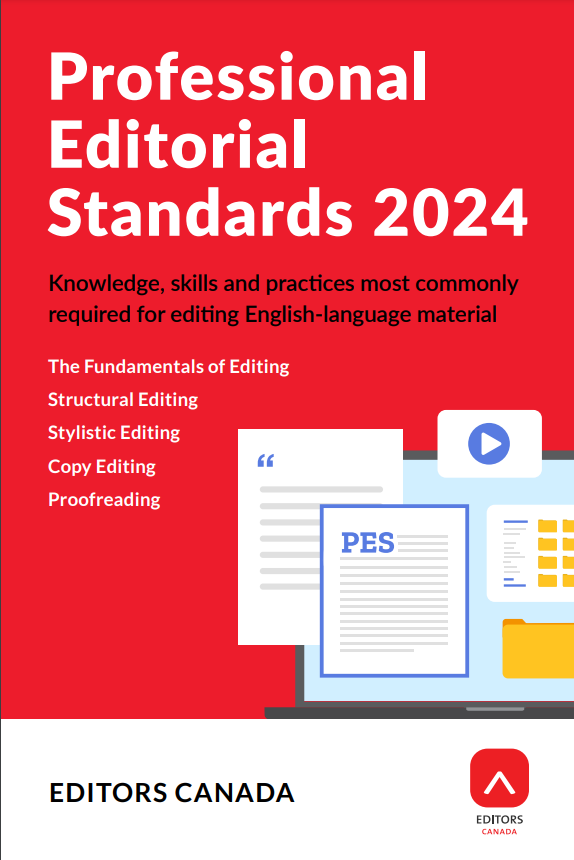All of us at West Coast Editorial Associates (WCEA) are…
Developing editorial judgment

Judgment is among the trickiest editorial skills to learn. Writers and editors make countless decisions in every document, from the words we choose to the length of our sentences and the number of levels of headings we use. These decisions don’t come with a foolproof set of rules, which is where judgment comes in. Which word will be clearest for the reader? Is the sentence too long, and does it have a logical break? How many headings is too many?
As we’ve been hearing more and more often lately, editorial judgment is the skill that most separates human editors from artificial intelligences (AI)—and successful editors from less sought-after ones. But what is editorial judgment, how do we develop it, and for those of us who teach, how do we help our students to learn it?
What is editorial judgment?
Judgment is the ability to observe and understand, draw on knowledge and experience, and form an opinion or reach a decision. Or as Merriam-Webster says, “the process of forming an opinion or evaluation by discerning or comparing.” At a very basic level, editorial judgment is determining whether or not to make a correction to the text, supporting visuals, or layout. (It might also be deciding whether or not to take on the project in the first place.)
Sometimes when we exercise judgment, the short- or long-term outcome is clear for most people. For example, correcting a misspelling in the author’s name is a good call. The author, the client, and readers are all likely to be happy with that decision.
Sometimes the outcome is not so clear, or it’s clearer to people with more experience than to those who are new to the field. For example, querying a variation on an accepted spelling or suggesting more inclusive language or imagery may or may not be welcome. In these cases, good judgment is sometimes described as a “gut feeling”: a combination of experience and analytical skills that help us to see a pattern or gain an insight that others might not see right away.
The bottom line is that editorial judgment involves thinking about the context—what purpose the text serves, what readers want from it, what timelines and budget the client is working with, and whether the change will substantively affect any or all of those things. Good judgment builds trust with the reader and the client.
How can editors develop editorial judgment?
Students in my proofreading classes are often surprised by the amount of decision-making involved. Many of them are new to editing, and they’ve come to class expecting to apply a rigid set of rules to a document. Instead, they find themselves having to decide about style and grammar and whether to make a change, query, or leave the text alone. “How do I know what to query?” they ask. It’s a great question.
Training is an excellent start because it develops your skills and gives you confidence, but even highly experienced editors are constantly refining their editorial decision-making skills. Here are three ways to develop and improve your judgment.
- Listen carefully and ask questions. Be sure you understand what the client wants. What message, question, or goal do they have? Don’t be afraid to ask questions and ask for feedback on your work, at least initially.
- Keep learning and building relationships. Take courses to stay on top of best practices, but also try to work on a range of projects for different clients. The more examples you can see from different projects and different contexts, the more you’ll be able to draw on your experience in new situations. And the more people you know and work with, the bigger the network you’ll have to draw on when you have a question you can’t answer.
- Be aware of your weaknesses. Recognize gaps in your learning and know how your emotions, beliefs, values, and goals can affect the way you perceive information. Take these biases into account when making decisions. Remember that the first solution you come up with may not be the best one. Be open to considering more than one option.
What’s the best way to teach editorial judgment?
One of the things I like most about teaching is seeing students play with new tools and new knowledge and gain confidence using them. I love the questions that come up, and the different ways that students approach and solve problems. Here are some ways I try to guide this learning:
- Help students understand the purpose of the document and what readers need. Editing well means knowing the overall context for a piece of writing so that you can gauge what will help readers most. There’s no point spending time or money making a change if it doesn’t serve the goal of the document or the reader. So, the first step in teaching editorial judgment is to help students identify who the document is for and why it’s been written.
- Help students know what to ask and when to ask it. Querying can be difficult. You don’t want to ask too many questions, especially questions you can easily find the answers to on your own. But you don’t want to assume either. So, the second step in teaching editorial judgment is helping students write clear, concise queries to get the information they need.
- Help students read and think critically and focus on practical solutions. Editorial judgment involves identifying redundancies or leaps of logic, poor tone, or confusing word or image choices and suggesting solutions to those problems. It means noticing inconsistencies or grammatical errors and working to smooth out those problems.
- Help students to understand when and why their decision might not be serving readers. As Erin Brenner notes, building editorial judgment is not only about teaching grammar rules but also “when to apply them, why we apply them, and how we apply them.” So helping students learn means being clear about what the error is or why their solution might not reflect best practice; where their thinking went astray or what confusion has resulted; and a possible solution.
Editorial judgment is a skill we’re all learning all the time. Perhaps editor Gerard Hill of the Chartered Institute of Editing and Proofreading says it best: “It’s all down to the three R’s: respect, restraint and then refine. Respect the writer: don’t rush in to improve it so the writer then says what you would have written. Restrain the urge to do surgery: when in doubt, stet (leave it). Don’t improve it if it’s good enough: refine it only if it is not good enough or not fit for purpose.” Three R’s to live by.



